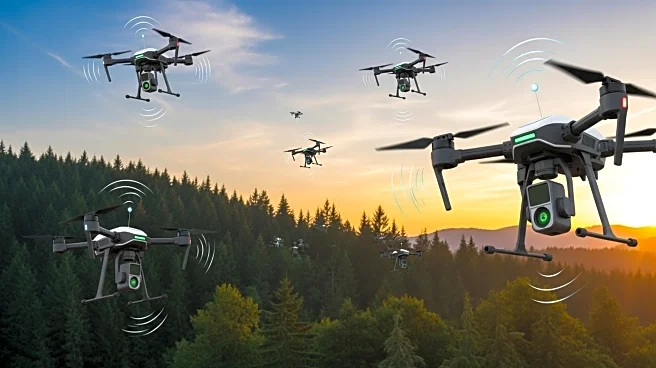What's Happening?
Researchers have developed a method to use fiber optic cables as seismometers, potentially improving earthquake early warning systems. A study published in Science details how scientists used a 'distributed acoustic sensing interrogator' at the Arcata Police Station to image the Mendocino earthquake. This technology, which involves firing lasers through fiber optic cables, can determine the magnitude, location, and rupture length of earthquakes. The study suggests that existing telecommunications networks could be leveraged for seismic monitoring, offering a cost-effective alternative to traditional seismometers, especially in seafloor monitoring.
Why It's Important?
The advancement in using fiber optic cables for seismic monitoring could significantly enhance public safety by providing more accurate and timely earthquake warnings. This technology could be crucial in predicting catastrophic earthquakes, potentially saving lives and reducing damage. The ability to monitor seismic activity through existing telecommunications infrastructure could lead to widespread improvements in early warning systems, especially in areas where traditional seismometers are sparse. This development also opens up discussions on regulatory measures needed to access telecommunications networks for public safety purposes.
What's Next?
Further research and negotiations are needed to integrate this technology into existing networks. Scientists and telecommunications providers must address concerns about potential damage to cables and privacy issues. The technology's application in offshore monitoring is still limited, requiring technical advancements to extend its range. If successful, this could lead to a new era in earthquake prediction and monitoring, with potential applications in other areas such as volcanic activity monitoring.
Beyond the Headlines
The use of fiber optic technology in seismic monitoring raises ethical and regulatory questions about data access and privacy. Telecommunications companies may be hesitant to allow external instruments on their networks due to concerns about data security and cable integrity. However, the public safety benefits could outweigh these concerns, necessitating regulatory intervention to facilitate collaboration between scientists and telecom providers.










